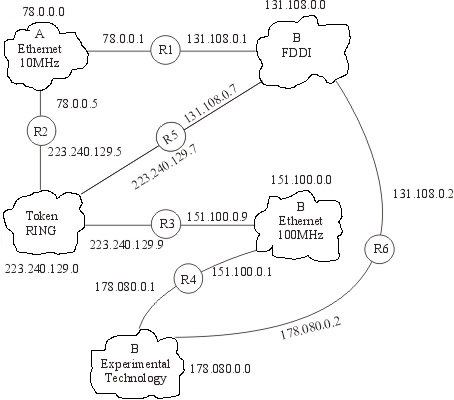Please refer to fig.1
Draw the routing table for R3. The table should have 3 columns as follows:
netid, netmask, next hop

Routing Algorithm
Extract destination IP address, D, from the datagram and computer the network prefix, N;
If N matches any directly connected network address, the deliver datagram to destination D over that network (by resolving D to a physical address encapsulating the datagram and sending the frame.)
else if the table contains a host-specific route for D, send the datagram to next hop specified in the table.
else if the table contains a route for network N, send the datagram to the next hop specified in the table.
else if the table contains a default route, send the datagram to the next hop specified in the table.
else declare a routing error.
